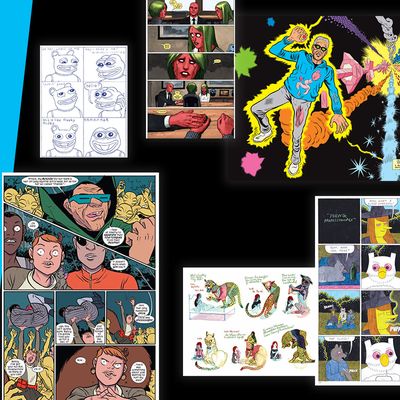
It’s been a supremely weird year for comics and their creators. Some cartoons have become improbable symbols of upheaval and resistance; others, as you’ll see below, have taken on a goosebump-inducing and unintentional significance. Even if we leave aside public affairs, it’s been a remarkable year for the industry: Circulation at comics shops has passed benchmark after benchmark, a National Book Award was given to a comic for the first time, and the cultural hegemony of superhero comics has been seriously threatened by the dominating ascent of other types of work on the best-seller lists.
Amid all this tumult, an array of stunning pieces have been released, many of which promise to resonate even after the dust of 2016 has settled. Below are ten of the best comics of the year. Comics is a tricky business, what with all the ongoing series, mini-series, graphic novels, graphic memoirs, and other formats, so we decided to simplify things by restricting our focus to bound volumes that were released in 2016, whether they were collections of individual issues or self-contained works. We only allowed first printings (or first English-language printings, if they’re foreign) and eschewed reissues of previously collected work.
Enough nitpicking. Let’s get to the funnybooks.
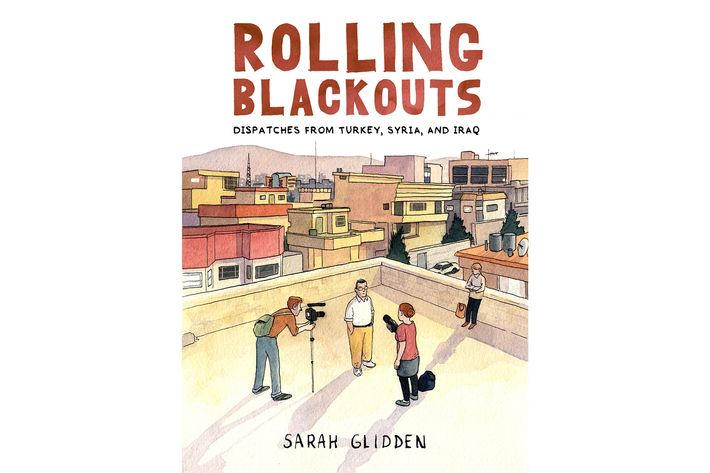
10. Rolling Blackouts: Dispatches From Turkey, Syria, and Iraq by Sarah Glidden (Drawn & Quarterly)
It’s hard to categorize Sarah Glidden’s dense and fastidious account of her marathon 2010 trip through the Near East. Given her demographic research and incorporation of the words of Turkish, Kurdish, and Arab interviewees, it’s tempting to refer to it as comics journalism. But by Glidden’s own in-book admission, she didn’t think of herself as a professional journalist — instead, she went with journalists she knew so that she could learn about their sticky profession. In doing so, she becomes something of an unreliable narrator, though by no means a deceptive one. As Glidden and her compatriots — including an American man who fought in the Iraq War and is frustratingly reticent to get worked up about it — traverse the former heart of the Ottoman Empire, the author struggles to understand both the powder keg around her and her responsibilities in representing what she observes. She’s ultimately too hard on herself, but her empathy for the people she saw breeds an empathy from those who are reading her story. Her lyrical line-work is pointedly unflashy, allowing us to lose ourselves in the maudlin dust. It’s anxiety-inducing to read this account with the present-day knowledge of the death cult that would rise in the coming years, but one tiny bright spot in a dangerous world is the prospect that we might soon get to see Glidden’s next overseas chronicle.
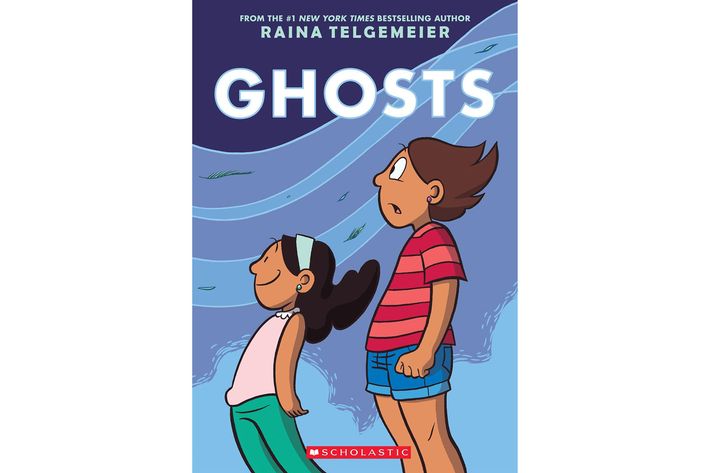
9. Ghosts by Raina Telgemeier and Braden Lamb (Scholastic)
As of November 27, 50 percent of the New York Times best-seller list for paperback comics consisted of books by Raina Telgemeier. That’s Beatles-level chart dominance, and it’s well-deserved. The most recent of the works she ensconced there is Ghosts, a sweetly sad tome that merges YA coming-of-age tropes with the venerable tradition of Latin-American magical realism. In it, a pair of half-Latina sisters move to a new town in Northern California, where the climate might help the younger one bear the awful burden of cystic fibrosis. A local boy lets them in on a little secret: Folks take Día de Muertos pretty seriously around here because los muertos like to come out and celebrate it with them. This isn’t a ghost story, per se, because the ghosts aren’t there to frighten any impressionable young readers. Instead, Telgemeier uses her thick lines, synaesthetic backgrounds, and stark facial work to argue that we needn’t be paralyzed by the knowledge that death is always around the corner — we should be empowered by it. After all, a precarious thing is a precious thing, especially when it comes to your loved ones. There’s so much fear involved in being young, and Telgemeier excels at telling us not to deny it, but rather to, as the penultimate line of Ghosts says, just go with it.
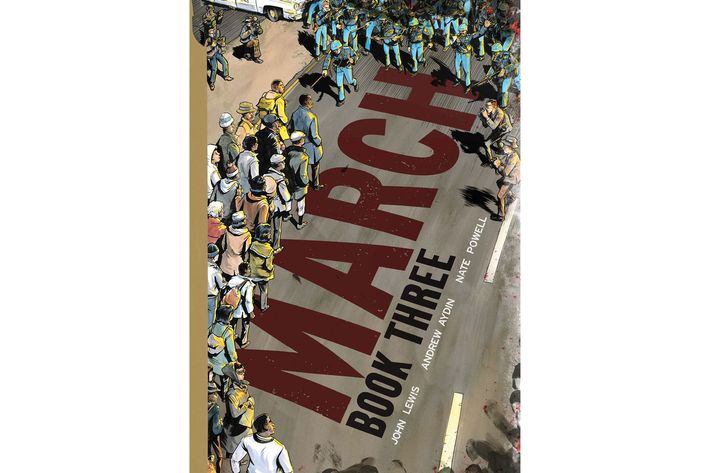
8. March: Book Three by John Lewis, Andrew Aydin, and Nate Powell (Top Shelf)
A warning for those who have been anguished by the results of this year’s presidential election: The final book in the March trilogy may seriously mess you up. Here, Congressman John Lewis concludes his best-selling comics narrative about his time in the civil-rights movement, and two moments of triumph inadvertently become moments of melancholy for the progressive-minded reader. When illustrator Nate Powell uses sweeping pencils and chiaroscuro inks to present the signing of the Voting Rights Act of 1965 and the epilogic inauguration of Barack Obama in 2009, it’s hard not to feel your insides twist with the knowledge that the former would be gutted in 2013 and the latter would be followed by the election of a KKK-endorsed candidate. Nevertheless, it would be foolish to only draw despair from March: Book Three. Above all else, Lewis and his collaborators tell a narrative about the blindingly urgent importance of civil society in times of state injustice. Sure, the morality is a little simplistic — all of the movement’s opponents are portrayed as paper-thin bigots whom the reader can all-too-safely distance herself from — but there’s nothing wrong with a little propaganda in service of righteousness.
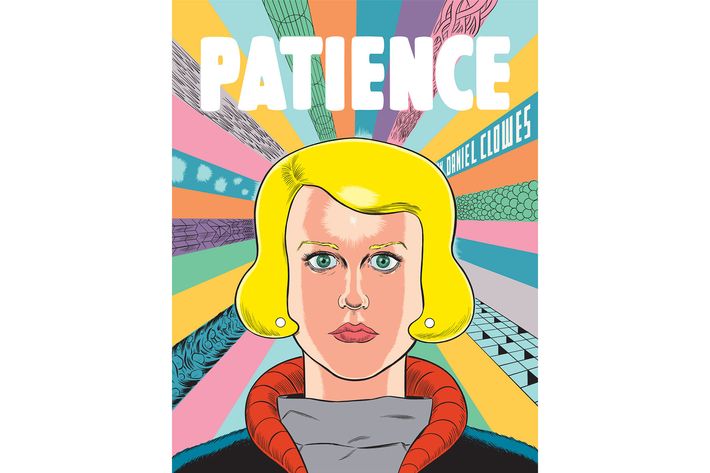
7. Patience by Daniel Clowes (Fantagraphics)
Last year, I had the pleasure of interviewing comics titan Daniel Clowes about his early work. When I asked him about the creators he most admired in his youth, he was swift in his reply: Spider-Man and Doctor Strange co-creator Steve Ditko. “There’s such a deep loneliness in his work that I respond to,” Clowes said. “The characters are always these singular guys walking through these foreboding urban landscapes.” Clowes could just as well have been describing much of Patience, the eye-popping graphic novel he was finishing up at the time. In it, we meet one such “singular guy,” a self-pitying and wholly unlikable gent named Jack. Clowes has often dabbled in surrealism and light sci-fi, but here he goes whole hog into the bizarre, shunting Jack through time and space as our sorta-hero clumsily attempts to right a tragic wrong. His journey features whiplash-inducing shifts in visual style that are steeped in Ditkology: One minute, we’re flying through a Doctor Strange–esque nether-realm where the laws of physics have been suspended; the next, we’re looking at the kinds of realistically hideous faces that populated Spidey’s world. I’m not sure the final thematic argument adds up to a whole lot, and Clowes doesn’t reach the narrative transcendence of past masterpieces like Ghost World or Ice Haven, but the dialogue is fantastic and the visuals are nothing short of jaw-dropping. Let us thank Ditko for teaching an impressionable young cartoonist that comics protagonists can be just as screwed up as the rest of us.
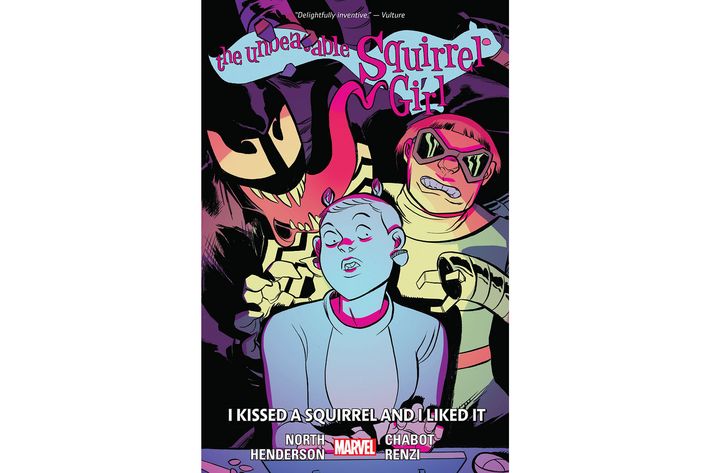
6. The Unbeatable Squirrel Girl, Vol. 4: I Kissed a Squirrel and I Liked It by Ryan North, Erica Henderson, Jacob Chabot, Andy Hirsch, Rico Renzi, Joey Ellis, Tom Fowler, David Malki, Braden Lamb, Chris Schweizer, and Kyle Starks (Marvel)
Speaking of Ditko, one of his most ludicrous co-creations was a silly Z-tier superhero by the name of Squirrel Girl, who was casually introduced in a 1992 Iron Man story. Her main distinguishing characteristics were her big squirrel tail and her ability to talk to squirrels … and that was about it. Two-and-a-half decades later, she is, astoundingly enough, the most thrilling character in the Marvel contemporary pantheon. Webcomics pioneer Ryan North and rising-star artist Erica Henderson launched a solo series for Squirrel Girl last year, and in this new collection of recent issues, the duo climb to innovative heights for the superhero genre. There’s a great little run of issues about S.G.’s attempts to ward off the men’s-rights-activist affections of classic Marvel villain Mole Man, presented via North’s Twitterspeak wit and Henderson’s balletically chunky design instincts. But the real action comes in two self-contained chapters: one told in the byzantine style of a choose-your-own-adventure book and one (guest-penciled by Jacob Chabot) that doubles as an introductory lesson in binary numeric notation. In less-capable hands, both of those concepts could have led to empty showing off, but Squirrel Girl’s stewards demonstrate an earnest passion for experimentation and a heartfelt instinct for charming characterization. Long may you eat nuts and kick butts, Squirrel Girl.
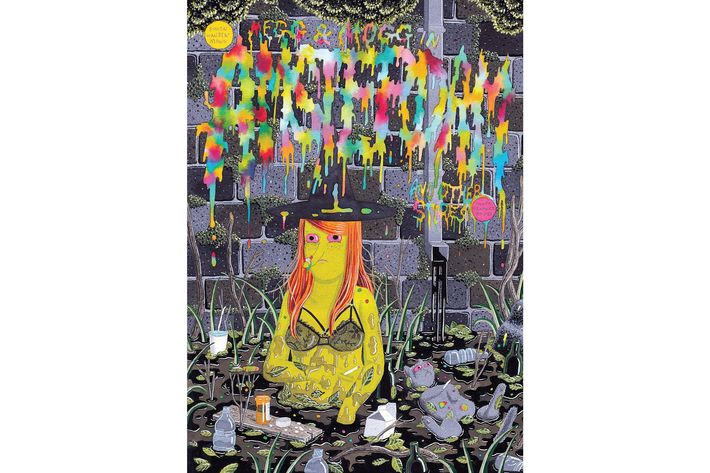
5. Megg and Mogg in Amsterdam and Other Stories by Simon Hanselmann (Fantagraphics)
There’s a scene about a third of the way through Megg and Mogg in Amsterdam and Other Stories that finds one of the protagonists, a hapless owl named Owl, doing a shift at his telemarketing job. We see him jerk up in shock while listening to something uttered on the other side of the line. His co-worker asks what was said. “Just … filth. Vile filth,” Owl replies. “Classless trash.” He doesn’t go into detail, but cartoonist Simon Hanselmann certainly does, masterfully suffusing his latest book with class-free filth of the highest order. This is Fantagraphics’ second compilation of strips about Hanselmann’s tragic quartet of Millennial screwups: depressed witch Megg; trainwreck cat Mogg; destructive wolf Werewolf Jones; and poor, sweet Owl. It’s a bleakly hilarious tour de force. In vignette after cringe-inducing vignette, we see the quotidian realities of mental illness and addiction, all presented without judgment or sentiment. Hanselmann has repurposed the rhythms of classic Sunday comics, throwing his dirtbags into wacky misadventures that nearly always end in tears (or blood, or mucus) and that accumulate into an avalanche of despair. Yet, improbably, there are moments of vomit-stained clarity and elation. Sure, you might not write a sonnet about watching your girlfriend take a dump in a train station, but if it reminds you of how much you love her, then hey, take your pleasure where you find it.
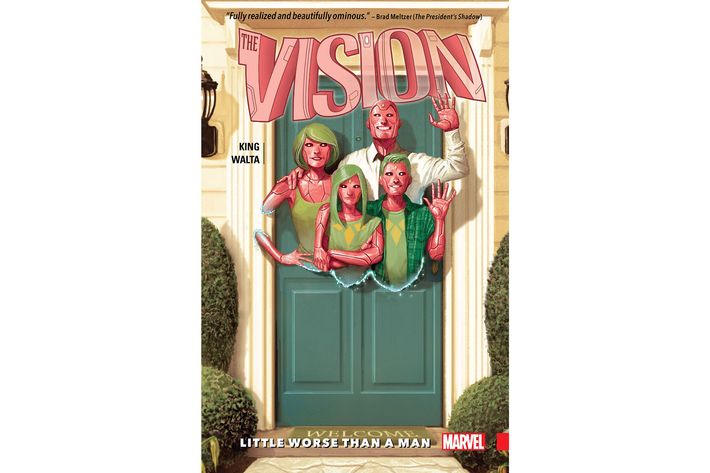
4. Vision Vol. 1: Little Worse Than a Man and Vision Vol. 2: Little Better Than a Beast by Tom King, Gabriel Hernandez Walta, Jordie Bellaire, and Michael Walsh (Marvel)
Last year’s announcement of a solo series starring the Vision seemed like a shameless bit of corporate synergy. The character — Marvel’s moodiest robot — had just made his cinematic debut in Avengers: Age of Ultron and was set to take the screen again in Captain America: Civil War, so the comics division was just gonna crank out some half-baked tie-in, right? Oh, how wrong we were. This 12-chapter tale turned out to be unlike anything Marvel has ever published — unlike anything the superhero genre has ever seen, really. Writer Tom King, artist Gabriel Hernandez Walta, and colorist Jordie Bellaire have crafted a taut, idiosyncratic parable about dysfunctions of both the mechanical and familial varieties. The setup is deceptively simple: Vision wants to understand humans better, so he builds a family and moves to the suburbs, where secrets and lies accumulate until everything goes pear-shaped. It would have been easy to turn this endeavor into a superpowered Blue Velvet knock-off about manicured-lawn ennui, but King is deft with narrative structure and inserts cryptic omens of snapped necks and razed worlds into the front portion of the story, forcing you to wonder how we could possibly get from family drama to the apocalypse. Then again, the best family dramas are always apocalyptic — there is no world more important than the one you build with your loved ones, and if it explodes, God knows what you might do. Walta and Bellaire are at the tops of their games here, making a chat in the school cafeteria as intense as a mega-battle in outer space. Perhaps most important, this is the rare superhero story that feels at once firmly situated in a fictional mythology and completely readable on its own. Unfortunately for Marvel, King recently signed an exclusive contract with eternal rival DC, but they’re lucky he helped make an all-timer before he walked away.
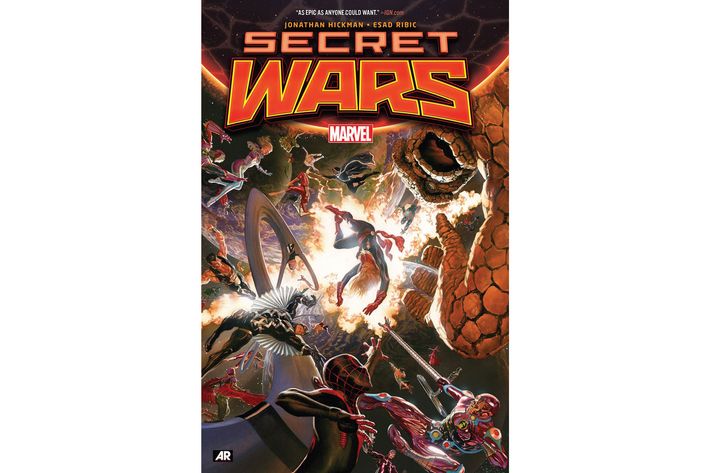
3. Secret Wars by Jonathan Hickman, Esad Ribic, Ive Svorcina, and Paul Renaud (Marvel)
After a few decades of reading superhero comics, you start to wonder if it was all worth it. You’ve drained out ungodly sums and untold hours to read these silly stories about spandex and energy blasts … and what do you have to show for it? An encyclopedic knowledge of made-up people and ridiculous battles? Well, thank God Emperor Doom for Secret Wars, because it makes all those misspent years worthwhile. This story is resoundingly not for everyone, as it’s built upon 65 years’ worth of Marvel Comics plots and characters, making it nearly impossible for even the most devoted fans to get all the allusions. But hey, Gravity’s Rainbow isn’t easy to understand without a reference guide, either. South Carolinian madman Jonathan Hickman tied up his acclaimed runs as writer of Fantastic Four, Avengers, and New Avengers with an awe-inspiringly baroque story that begins with two Earths smashing into each other and only gets more operatic from there. With the incomparable Esad Ribic and Ive Svorcina at his side, Hickman uses the entirety of Marvel’s history as his toolbox, constructing a fictional edifice that celebrates the intricate insanity of shared universes and reimagines longstanding figures in brilliantly unexpected ways. But what keeps Secret Wars from being a self-satisfied wankfest is the way it’s rooted in primal relationships and the intimate exchanges inside the eye of a storm. By the time we get to the climactic fistfight between Marvel’s ur-hero and ur-villain, Reed Richards and Doctor Doom, we’ve enjoyed one of the most ambitious and rewarding superhero narratives ever told. What’s more, in a real world where the axis of the superhero genre has moved decisively toward the silver screen, Secret Wars tells a story that can only exist in superhero comics, that bastard sector of the entertainment industry that stubbornly refuses to die.
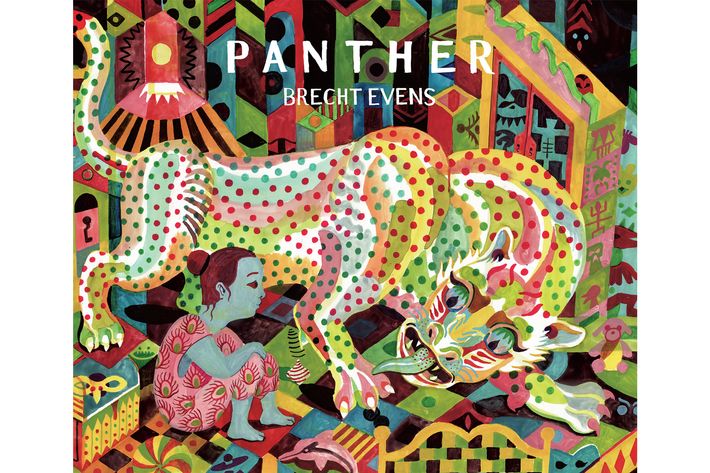
2. Panther by Brecht Evens, Michele Hutchison, Laura Watkinson (Drawn + Quarterly)
Children’s books are easy targets for deconstruction and satire. You can play upon an adult’s fond memories to get some cheap laughs; you can make a reader feel naughty by stirring lurid sex into them; you can even just riff on their stupid cover designs. But it’s no small feat to create something genuinely moving and upsetting with the structures and tropes of a tale told at bedtime. Remarkably, Belgian writer-artist Brecht Evens has pulled it off in Panther, one of the most beautiful and disturbing narratives of childhood ever produced in the comics medium. It would be a shame to spoil the agonizing surprises of the story, but suffice it to say that Panther is like a tragic Calvin and Hobbes or an ominous The Cat in the Hat. Evens charms you with sequences of simple pictures in which a young girl talks to a shape-shifting jungle cat, then abruptly widens your eyes with full-page watercolor tableaux of chaotic rooms that disobey the rules of perspective. His characters’ sparse dialogue squeezes your chest with all the portents left unsaid, and once you realize where the novella is going, it’s too late. It’s difficult to say what’s real and what’s imagined in Panther, but that’s probably the point. When you’re a child, the line between the two barely exists, making your joy and terror potentially infinite.
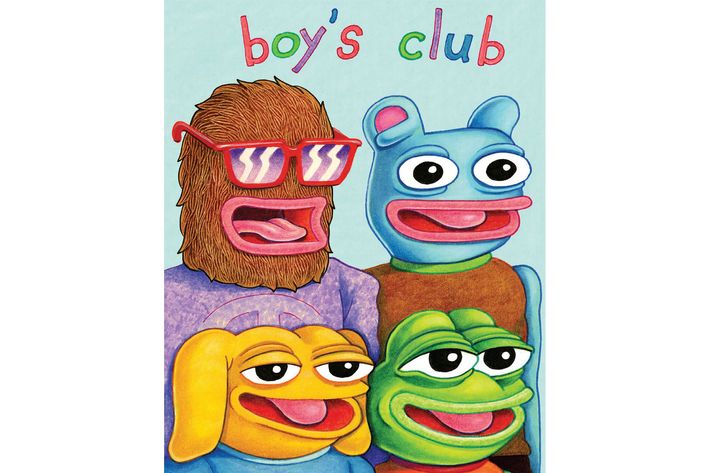
1. Boy’s Club by Matt Furie (Fantagraphics)
For better or worse — much, much worse — Matt Furie became one of the most successful cartoonists in history this year. He’s the man who invented Pepe the Frog, a character with the kind of ubiquity and prominence that most artists can only dream of. Thanks to the extreme right’s somewhat inexplicable embrace of Pepe, the amphibian now stands alongside Uncle Sam and Rosie the Riveter as an icon of American political life. He also stands alongside the swastika and the burning cross as a symbol proudly displayed by racists, white supremacists, and psychological terrorists. You can find Pepe in The Economist, the New York Times, the Anti-Defamation League’s hate symbols database, and the Twitter account of the President-elect of the United States. Furie, of course, asked for none of this. When he began drawing Pepe in his Boy’s Club strips in 2005, he just wanted the character to be a chill dude who enjoys smoking weed and peeing with his pants down.
Despite living in a certain amount of fear, 2016 hasn’t been a completely lost year for Furie and his frog — by total coincidence, Fantagraphics published the first Boy’s Club compilation this summer. It’s perfect. On the surface, these stories are incredibly stupid, merely depicting trashy glimpses into the lives of a quartet of anthropomorphic-animal slackers. But comics has long been a medium where crude simplicity can change your mind and break your heart, if you pay attention. Pepe, Landwolf, Andy, and Brett are joy incarnate, reveling in sloth and indulgence — but also in camaraderie. Their actions exist outside of time, never really building on anything that’s already happened and never exactly resolving into coherence, either. There’s an implied sadness there, because we know their ride won’t last, even as they live in an eternal present.
In a grinning and hazy chaos, Boy’s Club uncovers truth. Sometimes, it’s the usually unspoken truth of a “silent shart.” (“Ever tried pulling apart a grilled cheese sandwich?” Andy calmly explains.) Other times, it means Landwolf noting that kindness “doesn’t mean being weak, and it doesn’t mean being a follower” in between snorts of blow. These character are alive and unashamed in a way the reader can only aspire to be. The images sear themselves into your brain with their loping vulgarity, as modest as they are memorable. The world of Boy’s Club is a world where hatred is unimaginable — ironically enough, given this year. There is only fellow-feeling, lighthearted support, and celebration. “Pepe is everything and nothing,” Furie told me earlier this year. “He is stupid and amazing at the same time — kinda like life. Pepe is life.” We should be so lucky.


